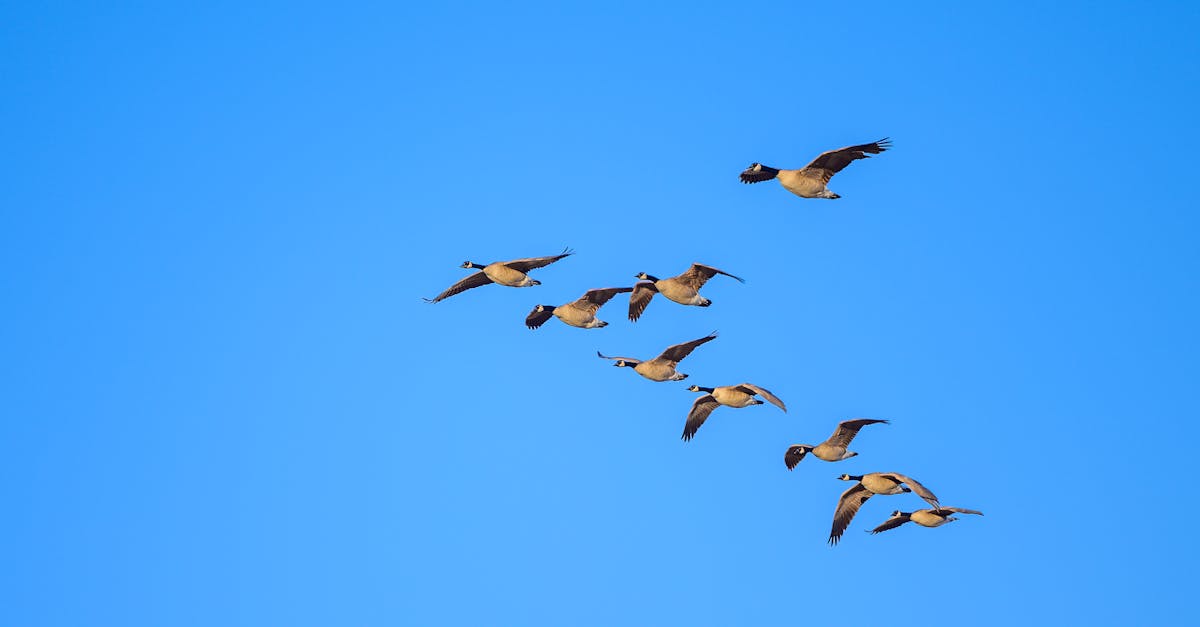As winter approaches, many people wonder about the migration patterns of birds. The phenomenon of birds flying south for the winter is not just a simple journey; it involves a complex interplay of instinct, environmental factors, and survival strategies. In this article, we will explore ten intriguing facts that explain why birds undertake this annual migration.
| Fact | Description |
|---|---|
| 1. Migration Instinct | Birds are born with an innate ability to migrate. |
| 2. Seasonal Changes | Changes in daylight and temperature trigger migration. |
| 3. Food Availability | Birds migrate to find food sources that are scarce in winter. |
| 4. Navigation Skills | Birds use the sun, stars, and Earth’s magnetic field to navigate. |
| 5. Safe Breeding Grounds | Many birds migrate to ensure safer breeding conditions. |
| 6. Social Behavior | Migration often occurs in flocks, providing safety in numbers. |
| 7. Climate Change Impact | Climate change is altering migration patterns for many species. |
| 8. Long-Distance Travelers | Some birds travel thousands of miles during migration. |
| 9. Resting Points | Birds stop at key locations to rest and refuel during migration. |
| 10. Human Impact | Urbanization and habitat loss threaten migratory routes. |
Migration Instinct
Birds possess an inherent instinct to migrate, which is crucial for their survival. This instinct is developed over generations and is influenced by genetic factors. Young birds often learn migration routes from their parents, ensuring that the knowledge is passed down and that future generations can successfully undertake the journey south.

Seasonal Changes
As the days grow shorter and temperatures drop, many birds respond to these seasonal changes. The reduction in daylight hours stimulates hormonal changes that signal birds to prepare for migration. This biological clock ensures that they begin their journey at the optimal time to avoid harsh winter conditions.

Food Availability
One of the primary reasons birds migrate is to seek out food. In many regions, food sources become scarce during winter, as insects and other food supplies diminish. By migrating to warmer climates, birds can access abundant food resources that are critical for their survival during the colder months.

Navigation Skills
Birds are remarkable navigators. They utilize a combination of the sun, stars, and Earth’s magnetic field to find their way during migration. Research has shown that some species can even detect the Earth’s magnetic field through specialized cells in their eyes, allowing them to navigate accurately over long distances.

Safe Breeding Grounds
Migration is not solely about survival during winter; it also ensures that birds have safe and suitable breeding grounds. Many birds travel to specific locations that provide ideal conditions for nesting and raising their young. These areas often have fewer predators and abundant resources during the spring and summer months.

Social Behavior
Many species of birds migrate in flocks, which enhances their safety. Flying together helps reduce the risk of predation, as there are more eyes to spot dangers. Additionally, social interactions during migration can strengthen bonds between individuals and aid in navigation.

Climate Change Impact
The impact of climate change on migratory patterns is becoming increasingly evident. Changes in temperature and weather patterns can disrupt traditional migration routes and timings. Some birds may arrive at their destinations too early or too late, leading to mismatches in breeding and food availability, which can affect population numbers.

Long-Distance Travelers
Some birds are incredible long-distance travelers. For instance, the Arctic Tern migrates from the Arctic to the Antarctic, covering over 70,000 kilometers (about 43,500 miles) annually. These impressive journeys are a testament to the resilience and adaptability of migratory birds, allowing them to thrive in various environments.

Resting Points
During their migration, birds often stop at specific locations to rest and refuel. These stopover sites provide essential resources, such as food and shelter, allowing birds to regain their strength before continuing their journey. Protecting these habitats is crucial for the success of migratory birds.

Human Impact
Human activities such as urbanization and habitat destruction pose significant threats to migratory routes. As natural habitats are altered or destroyed, birds may lose their traditional stopping points, making migration more challenging. Conservation efforts are essential to ensure that migratory birds can continue their journeys safely.

FAQs
Why do some birds not fly south for the winter?
Some birds, particularly those that have adapted to colder climates, may remain in their breeding areas during winter. They may find food sources that allow them to survive the cold months, while others migrate to warmer regions for better access to resources.
How do birds know when to migrate?
Birds rely on environmental cues such as changes in daylight, temperature, and food availability to signal the time to migrate. These cues trigger hormonal changes that prepare them for the journey.
Can all birds fly long distances?
Not all birds are capable of long-distance migration. Some species are adapted for shorter migrations, while others, like the Arctic Tern, undertake extensive journeys. The ability to migrate long distances often depends on the bird’s physiology and environmental adaptations.
What happens if a bird gets lost during migration?
While many birds have excellent navigation skills, some may get lost due to adverse weather conditions or disruptions in their environment. If lost, a bird may struggle to find food and shelter, which can affect its chances of survival.
For more information on bird migration, you can visit the [U.S. Fish and Wildlife Service](https://www.fws.gov) and the [National Audubon Society](https://www.audubon.org) websites.
